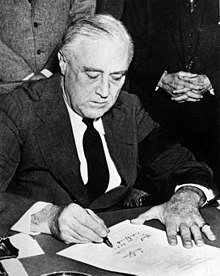Black armband



In Western culture, a black armband signifies that the wearer is in mourning or wishes to identify with the commemoration of a family friend, comrade or team member who has died. This use is particularly common in the first meeting following the loss of a member. In association football, it is common for a team to wear black armbands in their next match after the death of a former player or manager. This may also be accompanied by a moment of silence at the start of the match.
The phrase "black armband view of history" was introduced to the Australian political lexicon by conservative historian Geoffrey Blainey in 1993 to describe views of history which, he believed, posited that "much of [pre-multicultural] Australian history had been a disgrace" and which focused mainly on the treatment of minority groups, especially Aborigines.[1] The term was used by Prime Minister John Howard, whose perspective on Australian history strongly contrasted with what he called the black armband view.[2]
See also
- 21-gun salute
- Ten-bell salute
- Three-volley salute
- Tinker v. Des Moines Independent Community School District
References
- ^ M. McKenna, (10 November 1997), Research Paper 5 1997-98: "Different Perspectives on Black Armband History, Parliament of Australia, Parliamentary Library Archived 4 April 2009 at the Wayback Machine
- ^ John Howard. The Liberal Tradition: The Beliefs and Values Which Guide the Federal Government Archived 2011-07-27 at the Wayback Machine, 1996 Sir Robert Menzies Lecture. Sir Robert Menzies Lecture Trust. Retrieved 16 January 2010.
